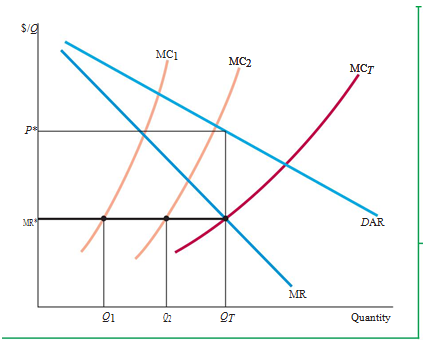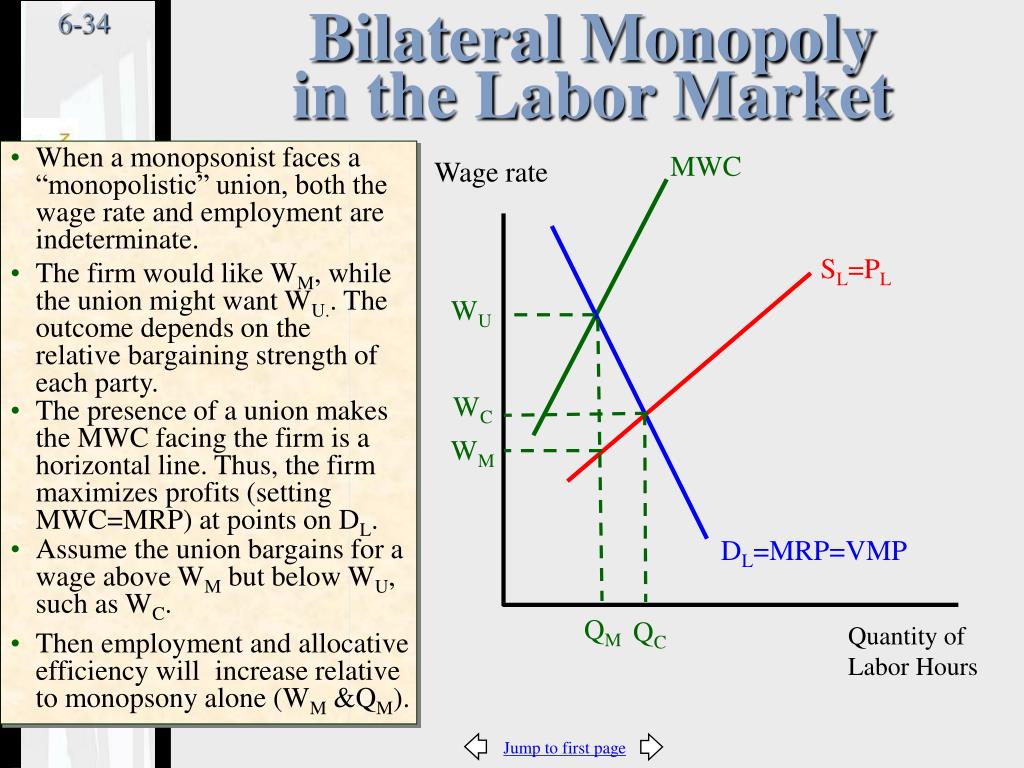

International Brotherhood of Teamsters (IBT) Service Employees International Union (SEIU) Department of Labor, Bureau of Labor Statistics) Union Table 15.2 The Largest American Unions in 2013(Source: U.S. In summary, the percentage of workers belonging to a union is higher for men than women higher for blacks than for whites or Hispanics higher for the 45–64 age range and higher among workers in government and manufacturing than workers in agriculture or service-oriented jobs.
#BILATERAL MONOPOLY EXAMPLES PROFESSIONAL#


Occupations in which relatively high percentages of workers belong to unions are the federal government (26.9% belong to a union), state government (31.3%), local government (41.7%) transportation and utilities (20.6%) natural resources, construction, and maintenance (16.3%) and production, transportation, and material moving (14.7%).4.2% of workers ages 16–24 belong to unions, as do 14% of workers ages 45-54.12.5% of full-time workers and 6.0% of part-time workers are union members.

11.1% of white workers, 13.4 % of black workers, and 9.8 % of Hispanic workers belong to unions.male workers belong to unions 10.5% of female workers do Following are some of the facts provided by the bureau for 2013: Bureau of Labor and Statistics, about 11.3% of all U.S. FACTS ABOUT UNION MEMBERSHIP AND PAYĪccording to the U.S. We will start with some facts about union membership in the United States. Critics of labor unions view them as having a tendency to grab as much as they can in the short term, even if it means injuring workers in the long run by driving firms into bankruptcy or by blocking the new technologies and production methods that lead to economic growth. Supporters of labor unions view them as the workers’ primary line of defense against efforts by profit-seeking firms to hold down wages. The subject of labor unions can be controversial. Thus, negotiations between unions and firms are sometimes called collective bargaining. A labor union seeks to change the balance of power between employers and workers by requiring employers to deal with workers collectively, rather than as individuals. Given the marginal cost curve MC, it maximizes profit by supplying Qm and charging a price Pm.Ī labor union is an organization of workers that negotiates with employers over wages and working conditions. Here, the monopoly faces the demand curve D and the marginal revenue curve MR. A monopoly supplier of a factor of production acts just as any other monopoly firm. The firm will charge a price Pm equal to the MRP of the factor and sell Qm units of the factor.įigure 14.6 Monopoly Factor Supply. This situation is illustrated in Figure 14.6. A monopoly supplier of a factor faces a demand curve that represents the MRP of the factor. It will choose its output where the marginal revenue and marginal cost curves intersect and charge a price taken from its demand curve. Monopoly SuppliersĪ firm with monopoly power over a particular factor can be expected to behave like any other monopoly. Workers may join together in a union in order to enhance their bargaining power with their employers. Farmers, for example, often join forces to offset what they perceive as unfair market power on the part of buyers of their products. Second, individual suppliers of a factor of production may band together in an association to gain clout in the marketplace. In that case, economists analyze the firm’s choices as they would analyze those of any other imperfectly competitive firm. First, a supplier may be a monopoly or have a degree of monopoly power in the supply of a factor. Suppliers of factor services can exercise market power and act as price setters themselves in two ways. Buyers are not the only agents capable of exercising market power in factor-pricing choices.


 0 kommentar(er)
0 kommentar(er)
